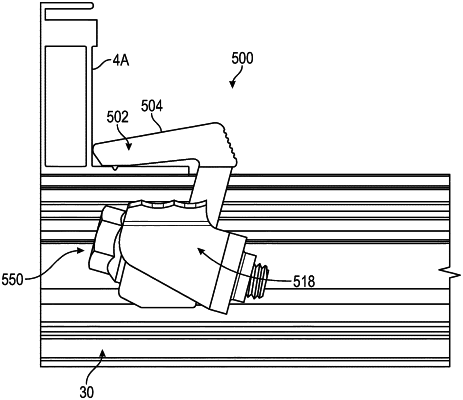| CPC H02S 20/23 (2014.12) [F24S 25/30 (2018.05); F24S 25/65 (2018.05); F24S 25/35 (2018.05); F24S 2025/6003 (2018.05); F24S 2025/6006 (2018.05); F24S 25/634 (2018.05)] | 20 Claims |

|
1. A hidden end clamp assembly configured to secure a frame member of a solar panel module to a rail, the assembly comprising:
a clamping body, wherein the clamping body comprises a top clamping portion having a lower clamping surface and a leg portion extending downwardly from the lower clamping surface at an acute angle, wherein a distal end portion of the leg portion comprises a base portion having at least one elongated opening formed therethrough;
a nut member, wherein the nut member comprises a pair of flanges extending from a rear portion, wherein the pair of flanges are spaced apart so as to at least partially receive the base portion of clamping body, wherein the rear portion extends at an angle substantially equal to the acute angle of the leg portion of the clamping body, and further wherein the rear portion comprises a threaded opening formed therethrough; and
a fastener member, wherein the fastener member comprises a drive head and a threaded shank, and wherein the threaded shank is configured to extend through the at least one elongated opening of the base portion and engage with the threaded opening of the rear portion of the nut member such that tightening of the fastener member causes the clamping body to move downward relative to the nut member.
|